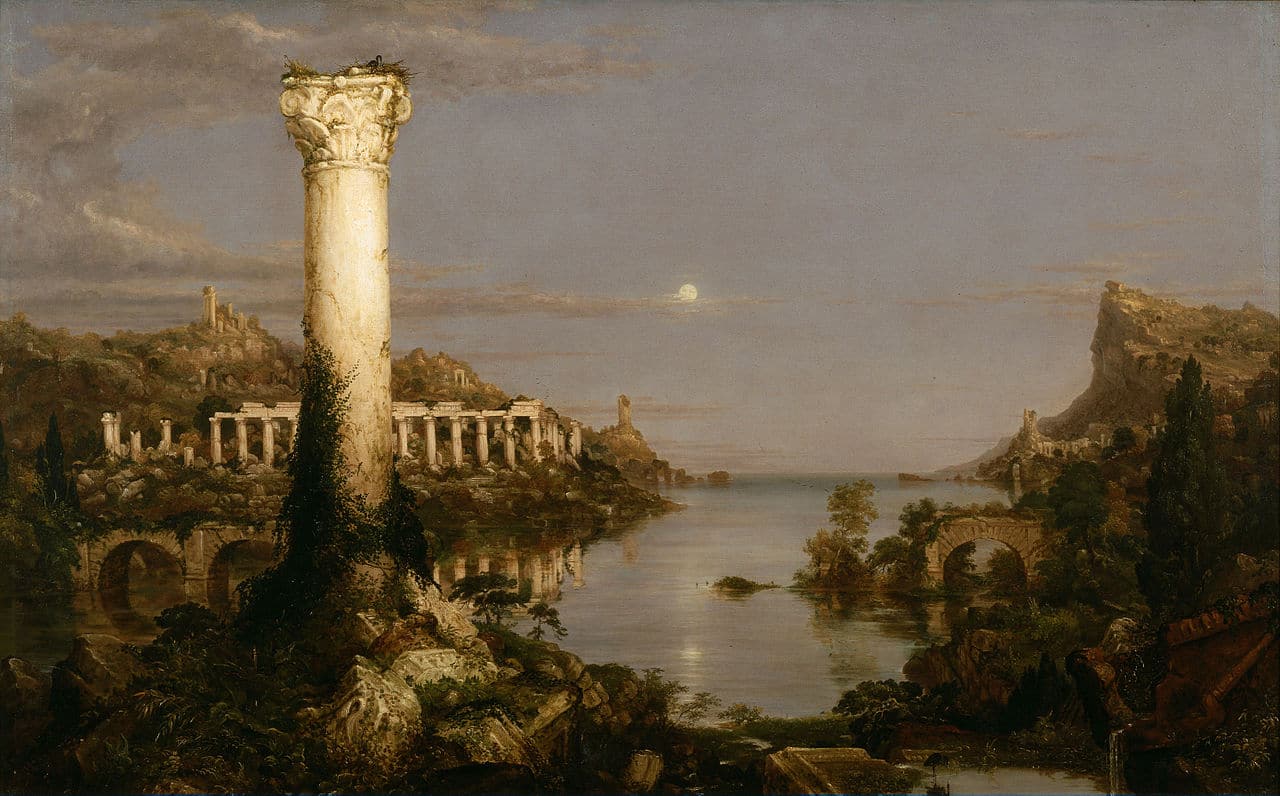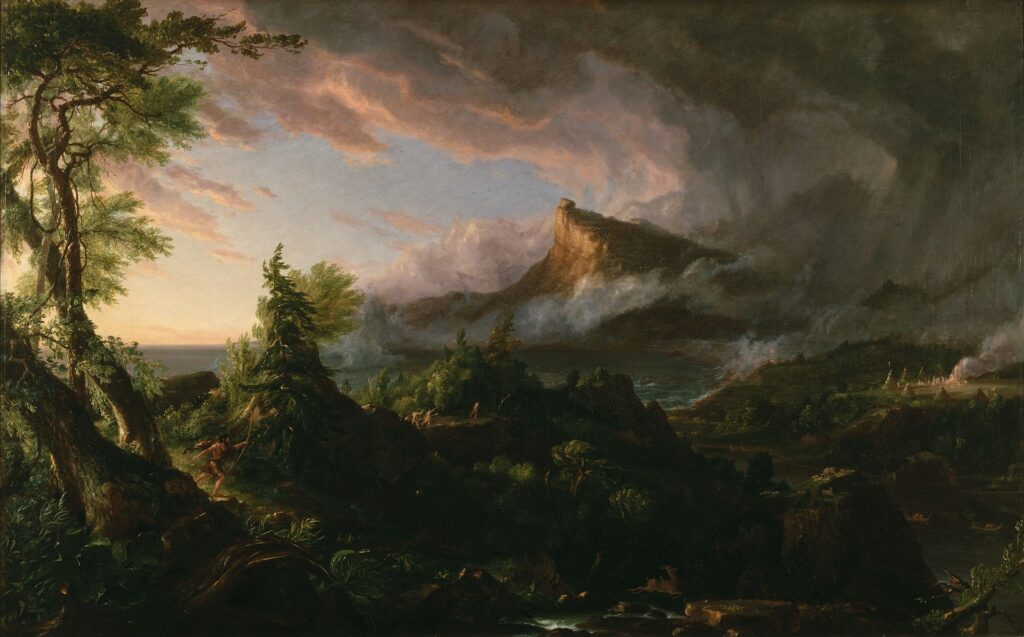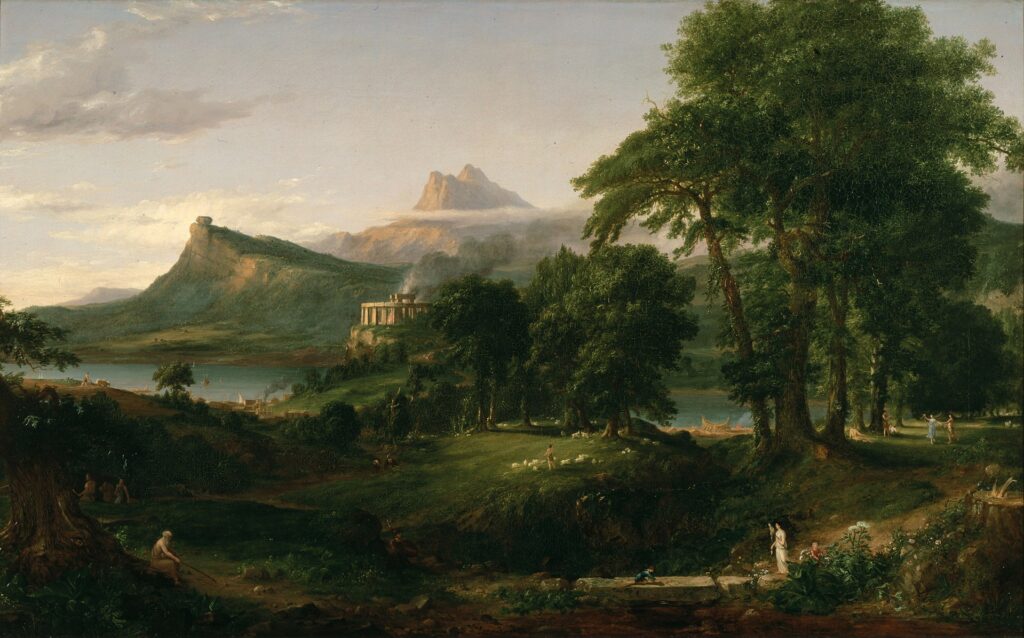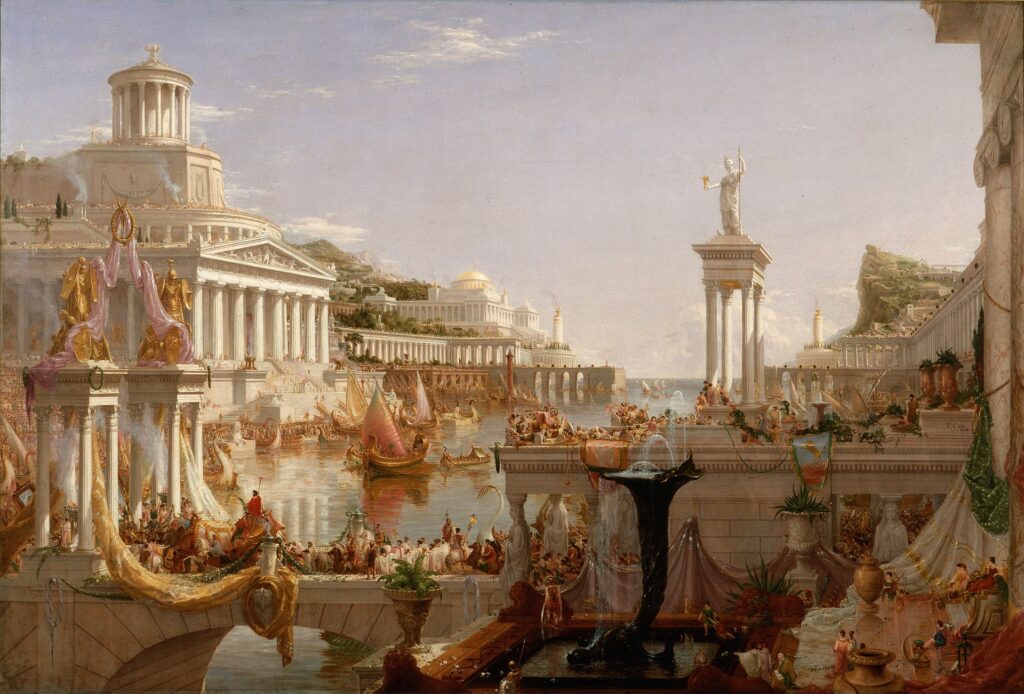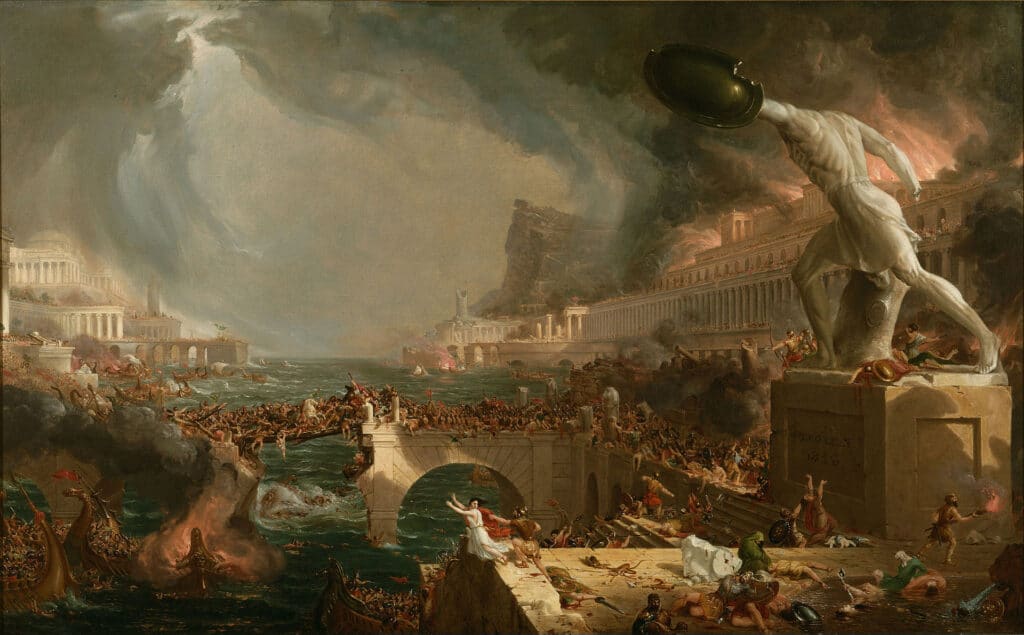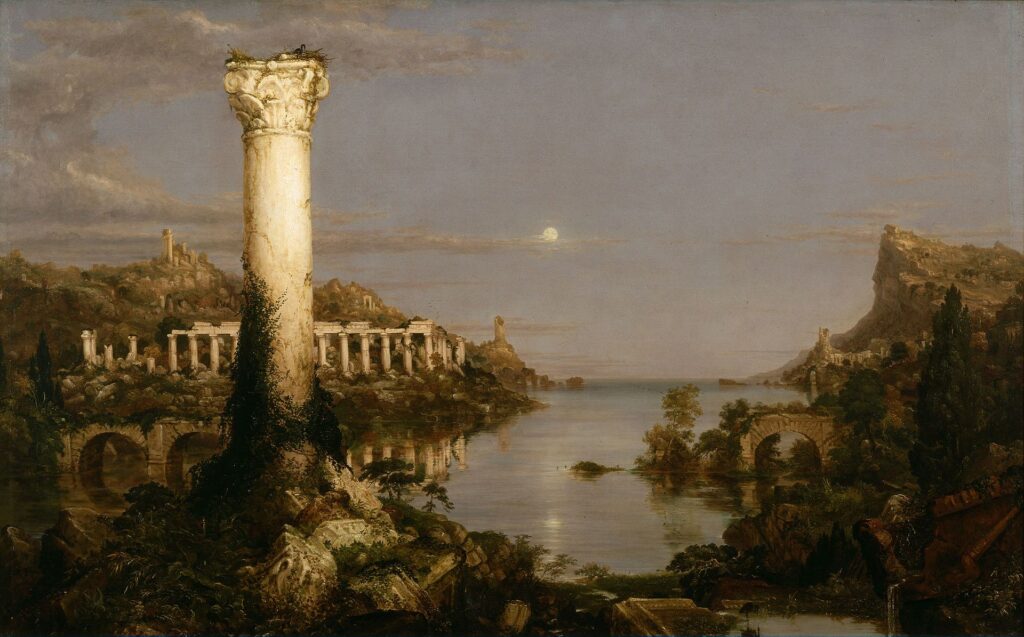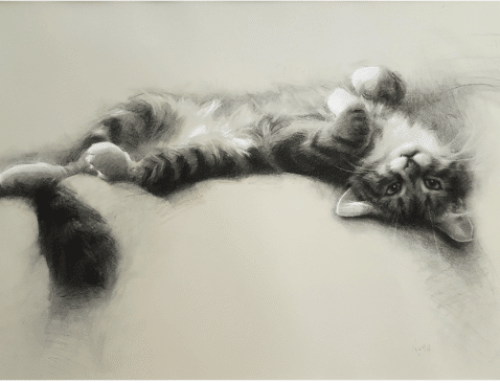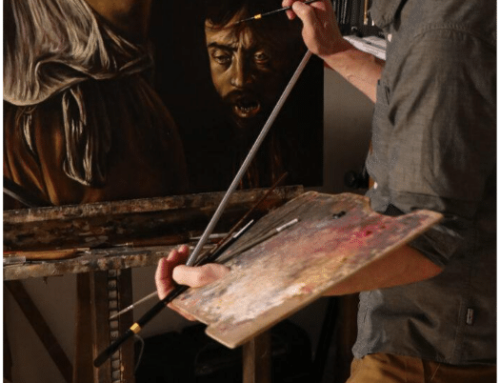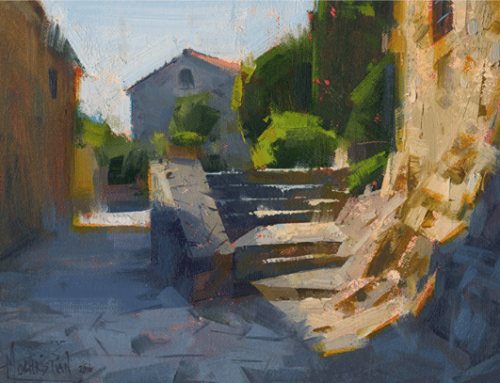The epic cycle The Course of Empire by nineteenth-century painter Thomas Cole is one of America’s great art treasures.The series of five large oil paintings takes the same river valley with a bay on the sea through the rise and fall of civilization. (Although the viewpoint changes, we know it’s the same location because Cole includes a distinct geographic feature – a boulder balanced on a cliff – visible in each picture.)
Click on these images for zoomable high-res versions – you won’t believe the details that emerge!
We start with indigenous / hunter-gatherer culture and progress through pastoral (agrarian) villages to the growth and fall of an imaginary city. Cole ends the series with a vision of deserted ruins and nature reclaiming the site.
A direct source of literary inspiration for The Course of Empire paintings is a long narrative poem by English Romantic era poet Lord Byron which Cole quoted in his newspaper advertisements for the series:
First freedom and then Glory – when that fails,
Wealth, vice, corruption …
The paintings were commissioned for a picture gallery on the third floor of a mansion in New York City.
The first painting, The Savage State, opens the drama with the dawn of a stormy day. A hunter wearing animal skins chases a deer through the wilderness, while on the far shore can be seen a clearing with a cluster of tipis around a fire, the nucleus of the city that is to be.
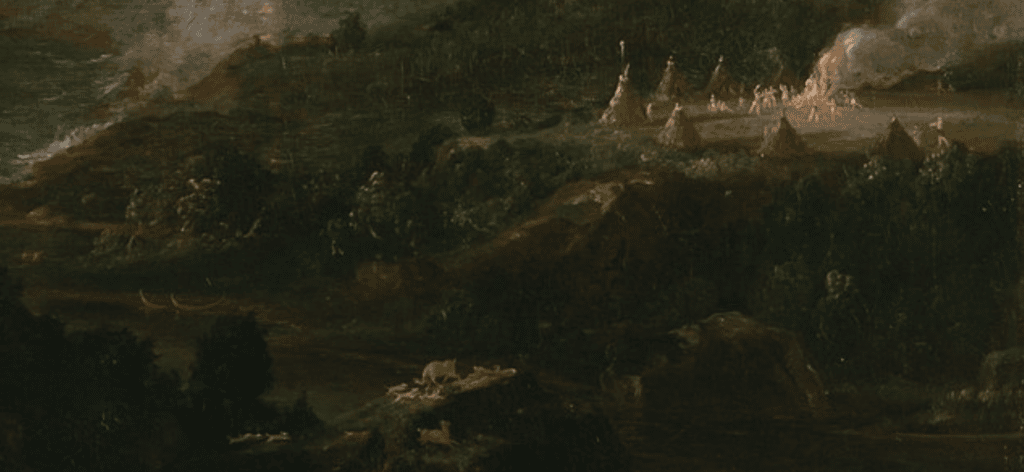
A critic at the time commented: “This painting depicts the ideal state of the natural world. It is a healthy world, unchanged by humanity.” And of course it doesn’t last long.
The next painting in the progression shows us humanity with domesticated animals living peacefully with the land in The Arcadian or Pastoral State. A Stonehenge-like temple structure has risen where the tipi settlement used to be.
The next painting, The Consummation of Empire, shows the ensuing civilization at its height. We’re standing on the plain where the temple used to be – we can still see the crane but from a different angle. The city’s Emperor appears, riding an elephant at the head of a long celebratory procession.
The fourth painting, Destruction, shows the Empire during its collapse. As Cole described it: “The picture represents the Vicious State, or State of Destruction. Ages may have passed since the scene of glory — though the decline of nations is generally more rapid than their rise. Luxury has weakened and debased. A savage enemy has entered the city. A fierce tempest is raging. Walls and colonnades have been thrown down. Temples and palaces are burning.”
The fifth painting, Desolation, shows the same scene decades later. As one 19th century writer described it: “The remains of the city are highlighted in the livid light of a dying day. The landscape has begun to return to wilderness and no humans are to be seen; but the remnants of their architecture emerge from beneath a mantle of trees, ivy, and other overgrowth.”
“The sunrise of the first painting is mirrored here by a moonrise, a pale light reflecting in the ruin-choked river while the standing pillar reflects the last rays of sunset. This gloomy picture suggests how all empires could be after their fall. It is a harsh possible future in which humanity has been destroyed by its own hand.”
It is also the most peaceful of the images. We see the city has been destroyed – but that boulder still remains atop its cliff in the distance. Nature, the only constant, begins the cycle anew.
I highly recommend clicking on these and exploring the high-res images of each painting. May you get your Art Geek on and enjoy poring over the intricate and sometimes surprising details of these remarkable works of art. If you’re ever in D.C., they’re wonderful to see in person at the Smithsonian Museum of American Art.
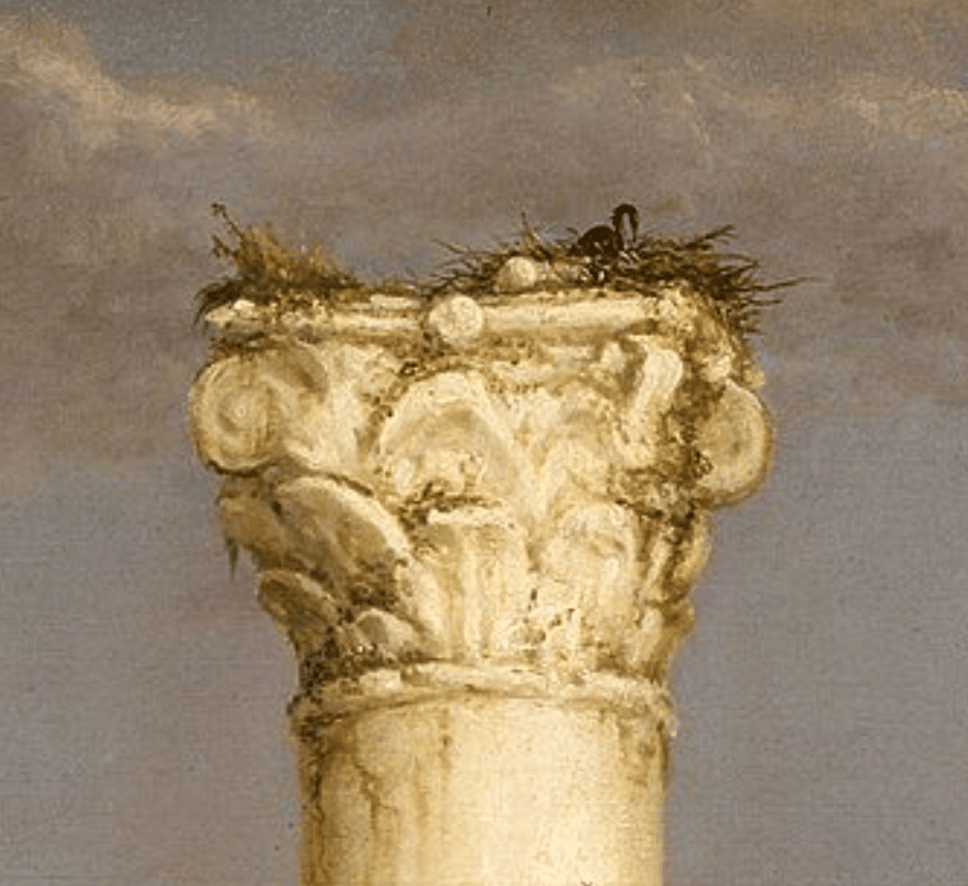
New Zealand to Host Plein Air Painters’ Gathering
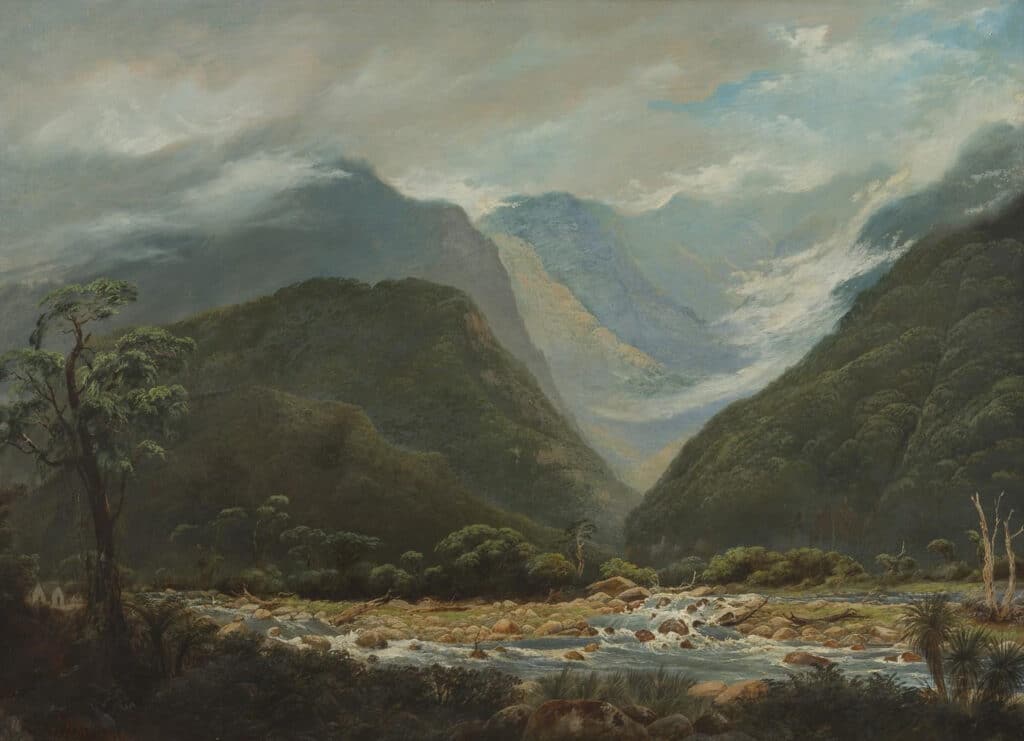
Isaac Whitehead, Milford Bay (New Zealand)
One place mountains like those in Cole’s Course of Empire series can still be painted is New Zealand. That’s what painters who join the next Publisher’s Invitational plein air gathering will be doing this September. There are still a few slots left for this event so check it out and don’t miss your chance!

